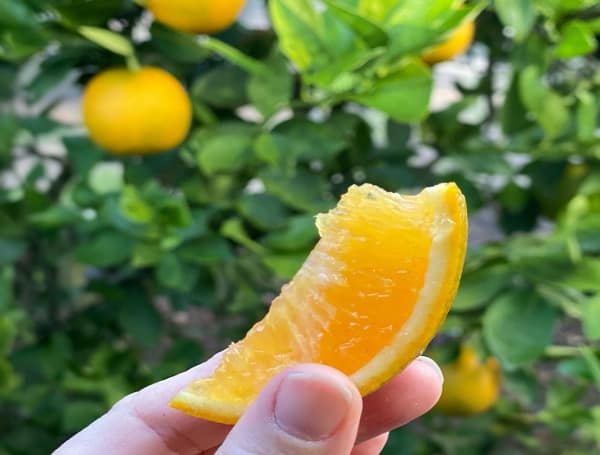Florida citrus growers recorded a very slight bump in orange production in the final count of the growing season, but the industry still experienced one of its most-devastating seasons in eight decades.
The U.S. Department of Agriculture on Tuesday, in a final report for the 2021-2022 season, said growers produced 40.95 million boxes of oranges, the lowest amount since the 1942-1943 season. That was up slightly from a June forecast of 40.7 million boxes — but was a 22.7 percent decline from the 2020-2021 season.
Similarly, grapefruit production ended the season 19.5 percent below the 2020-2021 total, and specialty fruits — tangerines and tangelos — were down 15.7 percent.
The industry has faced troubles for years because of issues such as a bacterial disease known as citrus greening. But the COVID-19 pandemic increased demand for orange juice from people seeking healthier drink options, driving some optimism.
“This is not an industry that we’re ready to give up on,” Matt Joyner, executive vice president and CEO of Florida Citrus Mutual, said Tuesday.
Shelley Rossetter, the Florida Department of Citrus’ assistant director of global marketing, said growers are focused on moving forward.
“While challenges remain, one thing is clear: the Florida citrus industry is committed to continuing to grow great tasting Florida citrus for years to come,” Rossetter said.
In the news: Florida AG Commissioner Fried Takes Aim At Law On Guns, Medical Marijuana
Along with citrus greening, the industry has struggled with issues such as development pressures, increasing labor costs and lingering impacts from 2017 hurricanes, including Hurricane Irma, which tore through major citrus areas. The industry and state have taken a variety of steps to try to deal with citrus greening, which is more formally known as huanglongbing, or HLB.
“We are fortunate to have the tools, funding, and people in place to move us forward on the path toward a solution to HLB,” Rossetter said. “With support from the governor and state Legislature, the industry is now working on a program to expedite the propagation of plant materials that may be tolerant or resistant to HLB.”
Also during this season, growers suffered through a winter freeze that significantly affected groves in Highlands and DeSoto counties and could impact the 2022-2023 harvest.
“Along with fruit that we had to salvage, (growers) also lost a fair amount of that bloom for next year’s crop, which was already starting to come out,” Joyner said. “They’ll put new bloom on and new fruit on, but we’re just not sure yet what the impacts of losing that early bloom are going to be.”
The state budget that went into effect July 1 included $37 million for the industry, with the biggest chunks of money being $17 million for Department of Citrus marketing programs, $8 million for research programs, and $6.2 million for what is known as the Citrus Health Response Program, which includes cultivating new trees resistant to greening.
The state, which more than two decades ago produced about 200 million boxes of oranges a season, produced 52.95 million boxes of oranges in the 2020-2021 season and 67.4 million boxes in 2019-2020.
Joyner said that since the 2017 hurricane damage, the industry has put in 68,000 new acres of citrus trees. Officials hope that will gradually add 8 million to 13 million boxes a year in production.
“We’re getting new trees in the ground. We see growers trying to invest in the future through those new plantings. We know that that research is starting to yield some horticultural practices that we hope will maintain and possibly even increase the productivity of our current inventory of trees,” Joyner said. “That’s critical. We can’t completely start over. New plantings take four or five years to come online. So, there’s sort of a suite of things that we hope are going to start to swing that pendulum back to the greater levels of productivity.”
The state ended the season producing 3.3 million boxes of grapefruit, the lowest total for a single season since 1917-2018. The grapefruit numbers were down from 4.1 million boxes in 2020-2021 and 4.85 million in 2019-2020. In the 1990s, the state averaged around 50 million boxes of grapefruit a season.
The state produced 750,000 boxes of specialty fruits, the lowest for a single season since 1925-1926. That amount was off from 890,000 a season ago and 1.02 million boxes in 2019-2020.
Visit Tampafp.com for Politics, Tampa Area Local News, Sports, and National Headlines. Support journalism by clicking here to our GiveSendGo or sign up for our free newsletter by clicking here.
Android Users, Click Here To Download The Free Press App And Never Miss A Story. Follow Us On Facebook Here Or Twitter Here.
Copyright 2022 The Free Press, LLC, tampafp.com. All rights reserved. This material may not be published, broadcast, rewritten, or redistributed.

